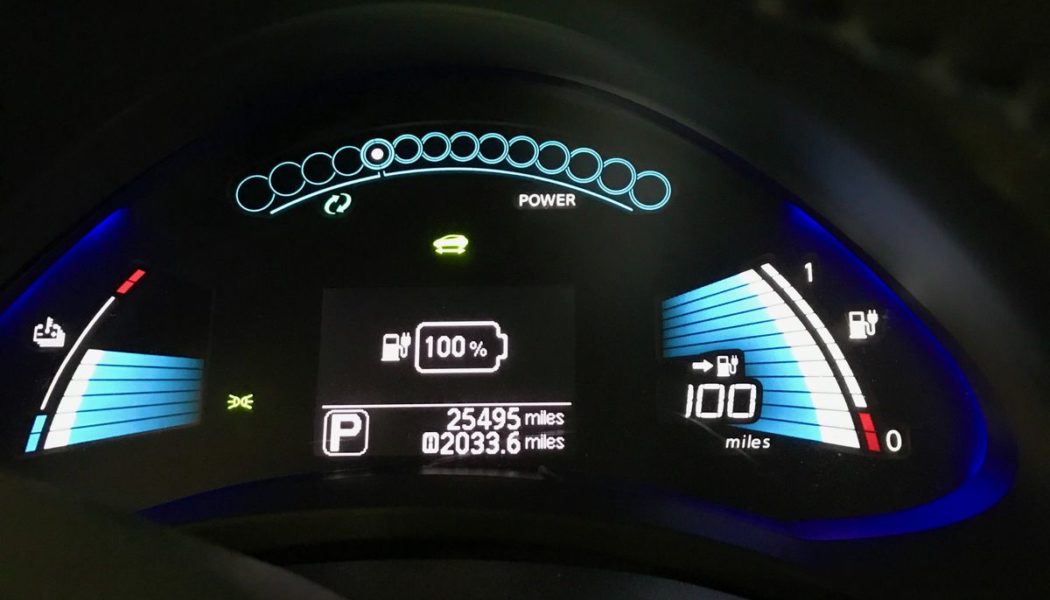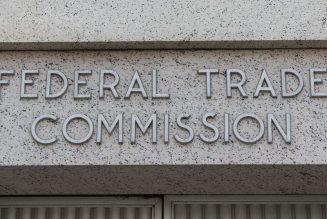The first-generation Nissan Leaf was a car that only an owner could love. It had bug eyes for headlights, the body of a Bulbasaur, a toy-like startup sound, and a large plastic nub in the center console that you moved like an air hockey paddle to put the Leaf in drive or reverse.
I was one of those owners, and while I swooned at the 2018 redesign, I still only had eyes for my first-gen Leaf. Like many first-time EV owners, it was my first real all-electric car, the one that changed how I thought about each journey and how to get there without depleting the battery. It’s the one that helped me discover what it’s like to have a gas station in your own home.
And most importantly, it was a hint of the revolution to come. The EV is here and so is the future of cleaner personal transportation. And now that the Leaf is reportedly on its way out of production, it seems fit to say goodbye to an early electric pioneer and one of the best cars I’ve ever owned.
The Leaf wasn’t a perfect car by a long shot. Most notably, it was not suitable for long road trips or even modest ones. The 2013 model I owned usually displayed 70–80 or more miles on its range guess-o-meter, though on weeks I commuted locally — and in perfect weather — I’d gotten it to creep into triple digits.
:no_upscale()/cdn.vox-cdn.com/uploads/chorus_asset/file/23920851/IMG_3635.jpeg)
:no_upscale()/cdn.vox-cdn.com/uploads/chorus_asset/file/23920885/IMG_4342.jpeg)
But on the highway, that range was elusive. I used to drive it between New York and Baltimore, stopping at whatever DC fast charging station I could find three times each way. I didn’t care, I was determined to only drive electric from there on out, and it really helped that I was saving a whole lot of money on the car itself and that I could charge for free at work.
The real deals for the Nissan Leaf came about in 2015–2016, when you could land the higher “SV” or “SL” trims in the used market in the low to mid $10,000 range. These models were more likely to come with built-in navigation (although CarPlay would not come until the 2018 redesign), Bose sound systems, and most importantly, the CHAdeMO DC fast charging port that could charge the car to 80 percent in about 30 minutes.
The unfortunate thing about the CHAdeMO fast charging standard is that it didn’t beat out the CCS combo connector that most of the industry has adopted for the US market. And Tesla still has its proprietary connector, though it does plan to start adding support for CCS combo at its stations soon.
Tesla did offer a CHAdeMO adapter that let drivers plug their luxury sedans into stations where the Leafs would normally frolic, but it’s not available in the US now. Right now, CHAdeMO is still available in almost all places CCS is, but major charging networks like Electrify America are starting to discontinue the connector in favor of opening more taps for the growing Tesla population.
But the biggest issue with the Leaf in the long term isn’t in the charging port; rather, it’s in the batteries. Early Leafs suffered rapid battery degradation in hotter climates or if quick charged too many times during road trips due to the absence of a liquid-cooled system.
A newer “lizard” battery module design came out in 2013, but the improvements weren’t drastic. In 2016, the Leaf finally got its first significant battery upgrade, going from 24 to 30kWh and improving its EPA-rated range to 107 miles. But it still wasn’t cooled — and neither were the redesigns in 2018 and beyond.
The used market got interesting as the Leaf got older. You would have to pray that dealers would post a clear picture of the full powered-on dashboard so you could count the bars of the battery health meter. The meter traveled vertically alongside the state-of-charge meter (SoC), and a very healthy battery could be identified if it still had all 12 bars (including the red bits).
But if you really wanted to know if the battery was viable, especially if a few bars were missing, you would need to get physical access and connect a Bluetooth OBD-II reader in combination with the handy-dandy LeafSpy app for iPhone or Android. (It’s also important to check with LeafSpy because the battery meter could be temporarily reset and appear to have a perfect battery, even when it doesn’t.)
If your own Leaf has a battery out of warranty, then you could try a third-party service that retrofits newer packs from donor Leafs that can enable longer range. In other words, Leaf owners have to keep a steady eye on the battery meter, purchase date, and mileage to make sure they don’t miss out on a crucial warranty-covered battery replacement — or else seek the modding community. The worst outcome would be to own a Leaf with a useless battery that can barely drive you to your closest shopping center without depleting.
:no_upscale()/cdn.vox-cdn.com/uploads/chorus_asset/file/23920987/IMG_2772.jpeg)
Despite some design flaws and the issue of Nissan hanging onto a dying charging standard, it was a very practical vehicle, was more affordable than the BMW i3, and had more cargo space compared to EV compliance cars like the Chevy Spark EV and the Ford Focus Electric. But it certainly was not a Tesla Model S, which was the only (can I say objectively?) good-looking electric car at the time, though they remained financially out of reach for most car buyers.
In 2018, the Leaf got its much-needed face-lift with longer range options. The following year, Nissan included a 200-plus miles option, but the car itself was essentially the same. The Leaf kept its starting MSRP close to $30,000 for most of its lifetime. You could have landed lower “S” trims that lack the leatherette seats and have steering wheels in the $20,000 range, and with the federal $7,500 incentive, it could go even lower.
But car buyers largely weren’t interested. Nissan still hasn’t triggered a phaseout of its sales-based federal incentives like Tesla and GM, which shows how weak Leaf sales have been over the years. Take Ford, for example; it’s only really been selling EVs since 2021 with the Mustang Mach-E, and it’s already about to hit the 200,000 sales threshold (though that cap might be lifted soon with new legislation). Recently, Nissan dropped its latest 2022 Leaf pricing to below the $30,000 mark for the 40kWh battery models that can go about 150 miles on one charge.
:no_upscale()/cdn.vox-cdn.com/uploads/chorus_asset/file/23920982/IMG_3509.jpeg)
Nissan popularized the “zero emissions” marketing soundbite that many EV manufacturers use today, and it helped pioneer the EV market with one of the most available and affordable all-electric options. The Leaf was a spectacle in its own right, with its weird design cues and whistling pedestrian warning sounds at low speeds. Nissan followed the product differentiation path that Toyota and others made: make the internal combustion cars look more attractive and don’t stir the pot too hard on the fossil fuel economy that all automakers have counted on forever.
But at the same time, Nissan treated their electric car differently. It built and sold an affordable electric car at a time when other EV manufacturers were starting with luxury models or compliance builds to appease regulators. It was a genuine effort to spur some sort of mass adoption of EVs, even if the rest of Nissan’s lineup overshadowed it in marketing. It’s a car that the company built for more than 10 years, and yet it didn’t change the Leaf all that much or apply what it learned to other models.
The Leaf got to be the first all-electric New York City taxi and even first demonstrated the car-to-home power backup tech that automakers like Ford plan to bring to market. It would be sad to see that era over if Nissan does pull the plug on the Leaf, but here’s hoping that the Leaf will return later, completely reborn.
Either way, I’m grateful to Nissan for giving me one of the most enjoyable and enlightening car experiences ever. With the automaker’s $17.6 billion initiative to transform itself into an electric vehicle company, we might see better and more affordable options soon — preferably options that aren’t boring and pricey compact SUVs (sorry, Ariya).
Photography by Umar Shakir / The Verge









